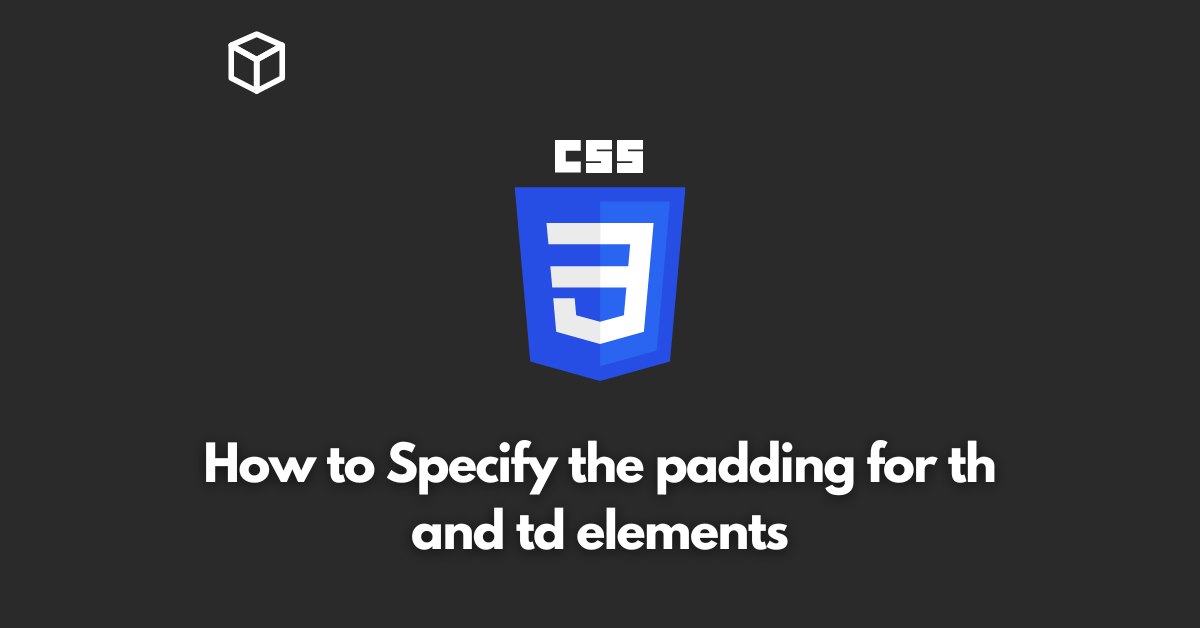One of the key elements in controlling layout is the padding property.
In this CSS tutorial, we will take a look at how you can specify the padding for the “th” and “td” elements in HTML tables.
Why Padding is Important
Padding is the space between the content of an element and its border.
It is an important aspect of web design as it helps to create a visually appealing layout and also improves the readability of the content.
By controlling the padding of elements, you can create a consistent look and feel for your website, which is especially important for tables.
Specifying Padding for “th” and “td” Elements
There are several ways to specify padding for “th” and “td” elements, including using inline styles, internal stylesheets, and external stylesheets.
Inline Styles
One way to specify padding for “th” and “td” elements is to use inline styles. This method allows you to apply styles directly to an individual element. For example, you can add the following code to a “th” or “td” element to give it a padding of 10 pixels:
<th style="padding: 10px;">Header</th> <td style="padding: 10px;">Data</td>
Internal Stylesheets
Another way to specify padding for “th” and “td” elements is to use internal stylesheets.
This method allows you to define styles in the head of your HTML document and apply them to elements throughout your website.
For example, you can add the following code to the head of your HTML document to give all “th” and “td” elements a padding of 10 pixels:
External Stylesheets
A third way to specify padding for “th” and “td” elements is to use external stylesheets.
This method allows you to define styles in a separate CSS file and apply them to elements throughout your website.
For example, you can add the following code to a CSS file and link to it in the head of your HTML document to give all “th” and “td” elements a padding of 10 pixels:
th, td {
padding: 10px;
}Conclusion
In this post, we have looked at how you can specify padding for “th” and “td” elements in HTML tables.
By controlling the padding of these elements, you can create a visually appealing layout and improve the readability of your content.
Whether you choose to use inline styles, internal stylesheets, or external stylesheets, controlling the padding of elements is an important aspect of web design that every developer should understand.




